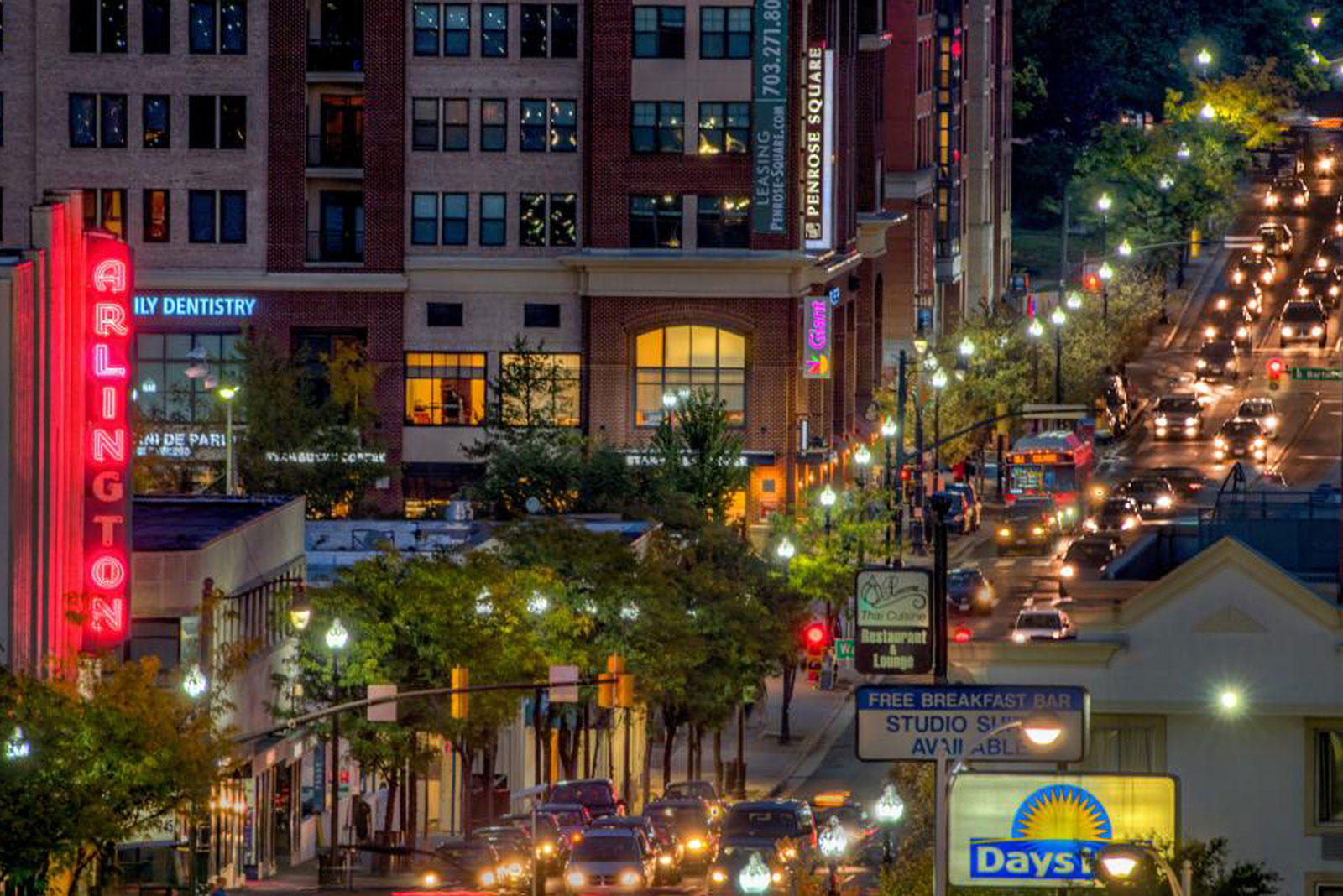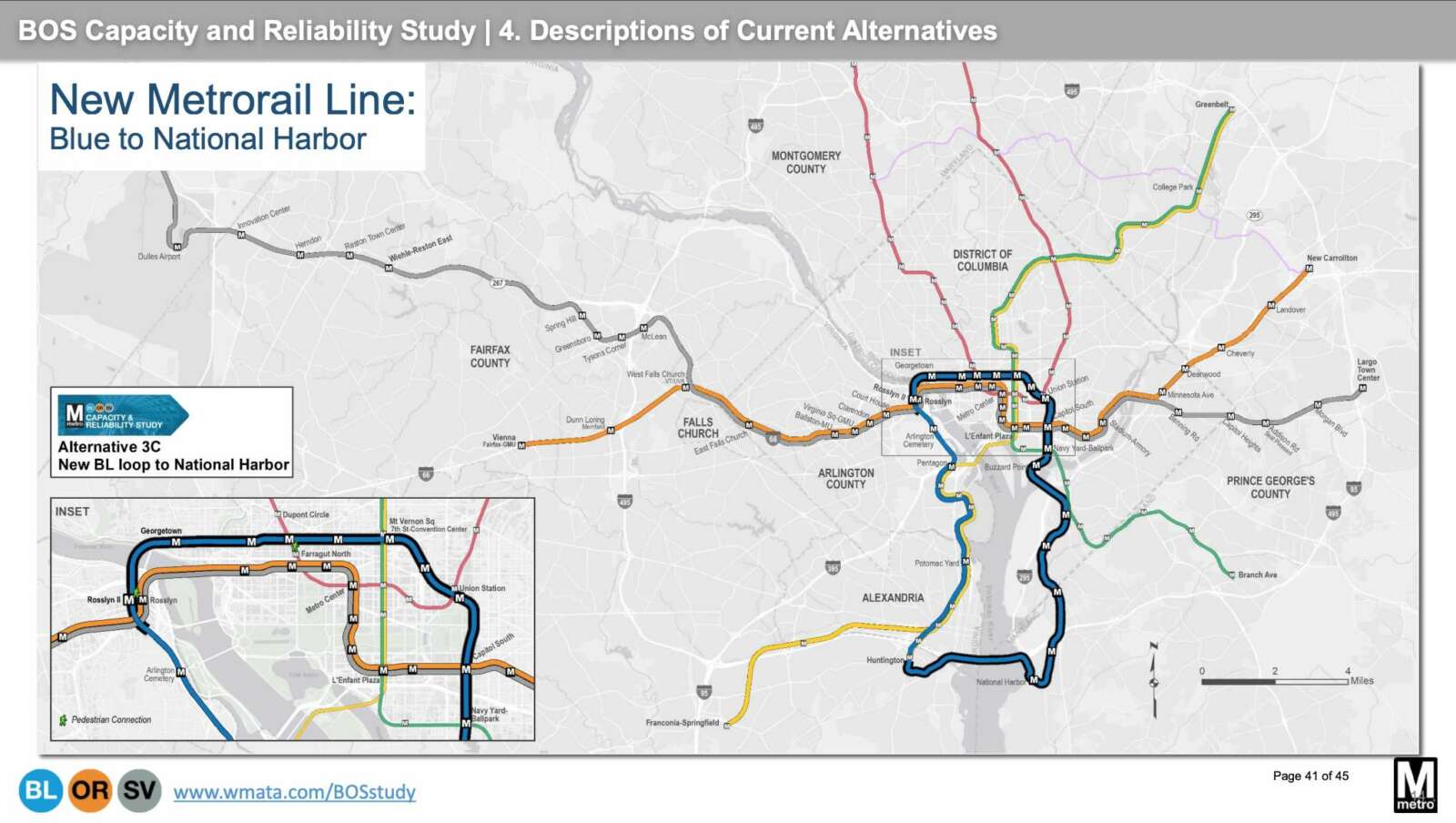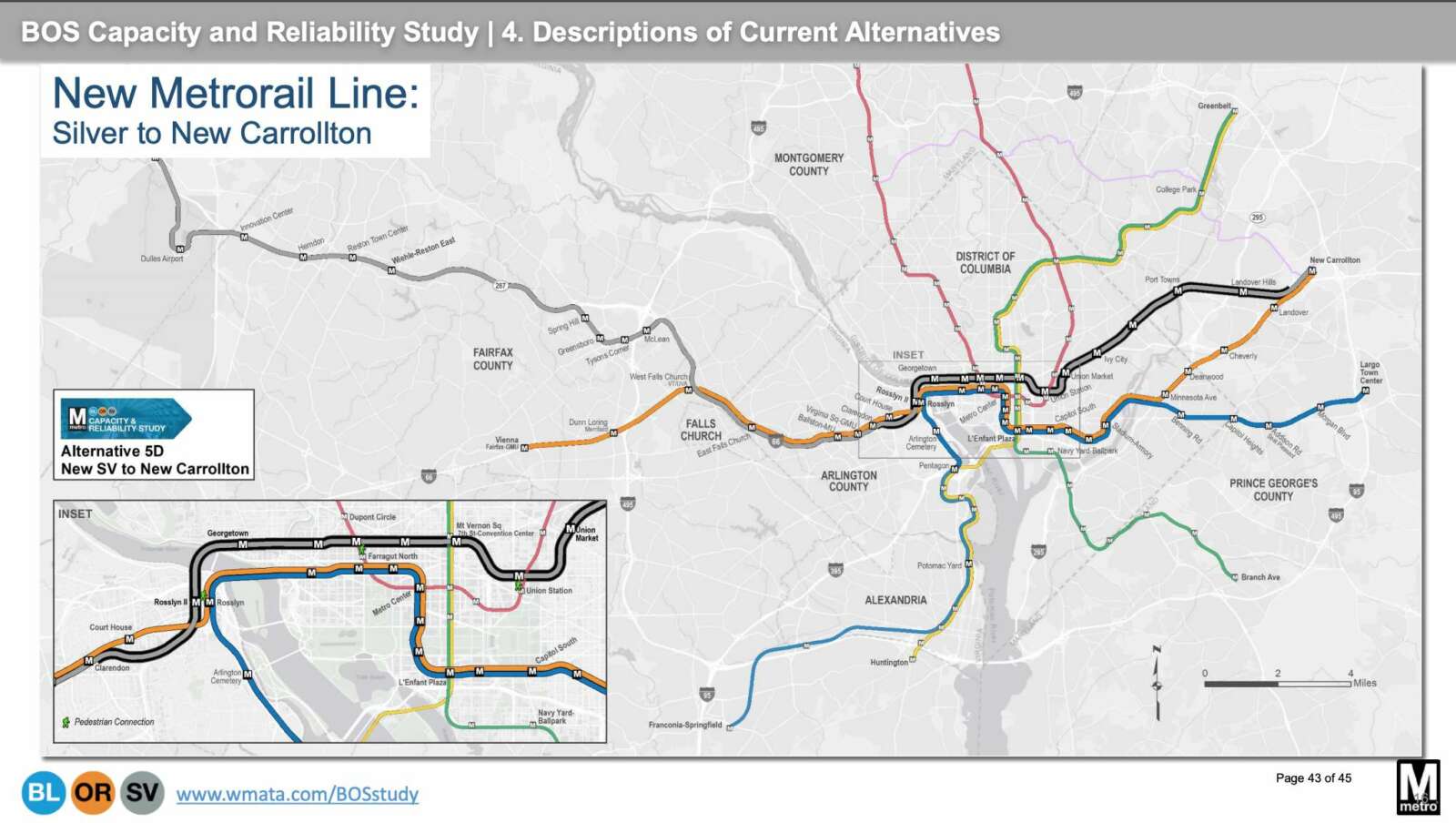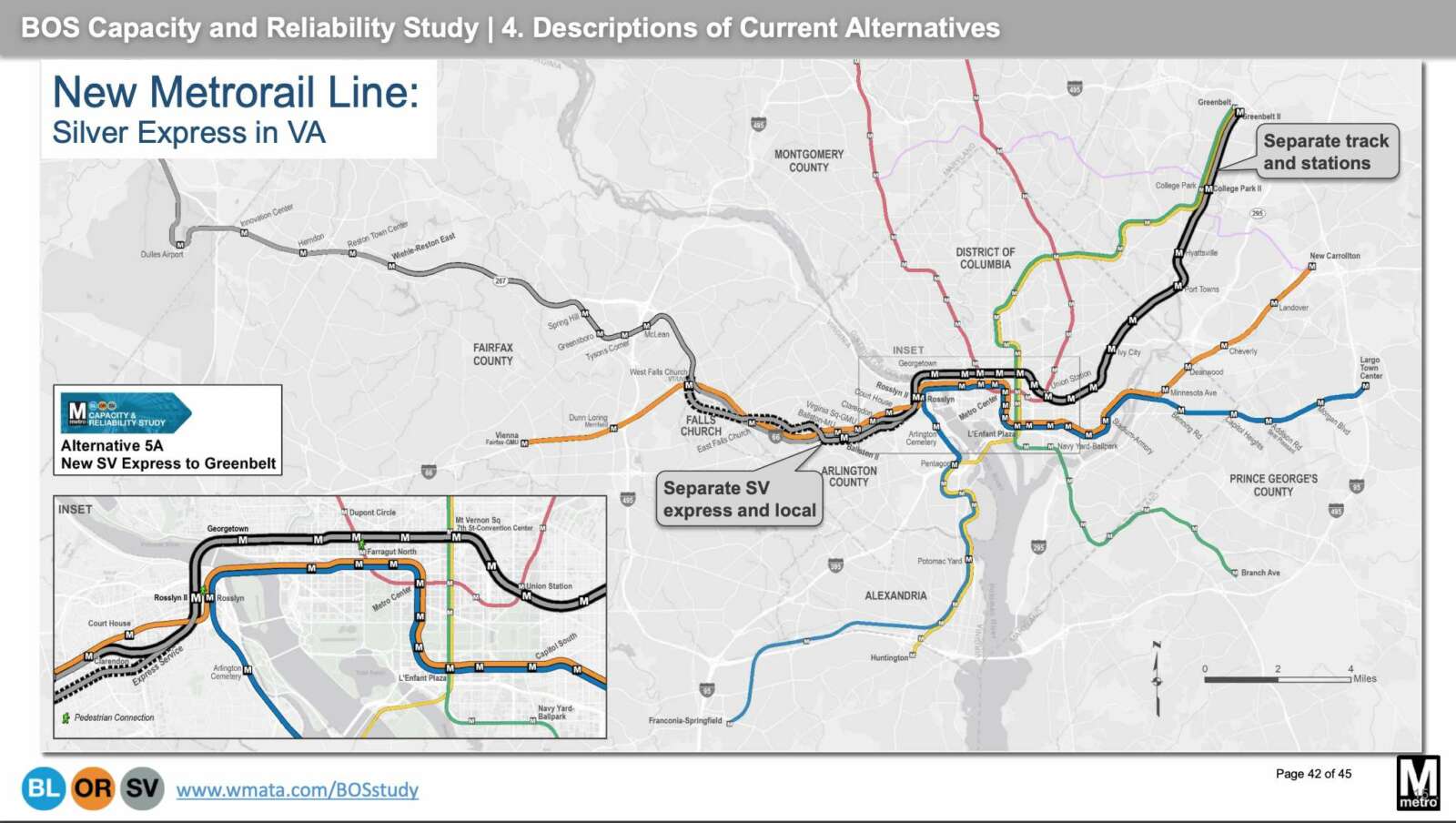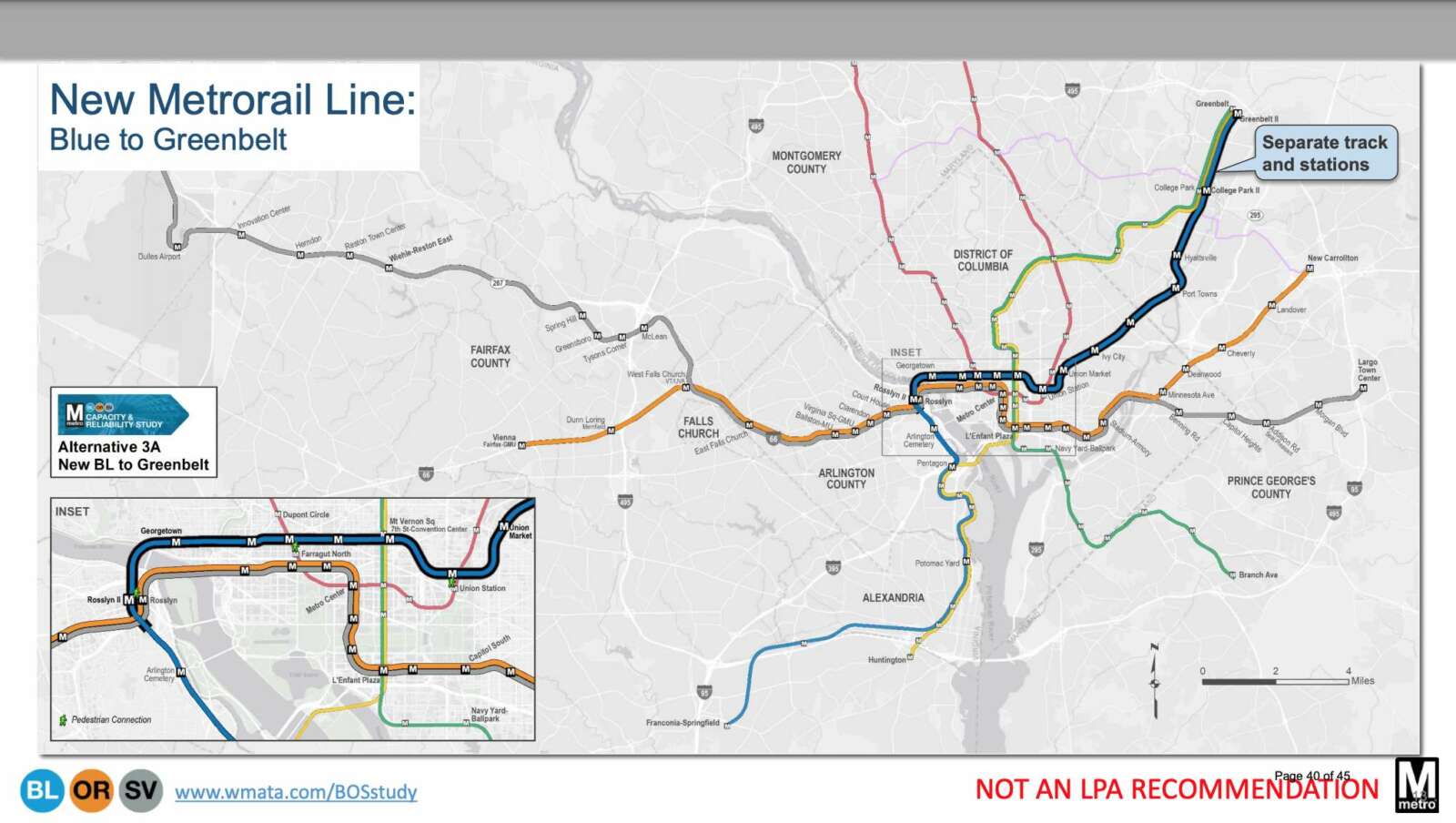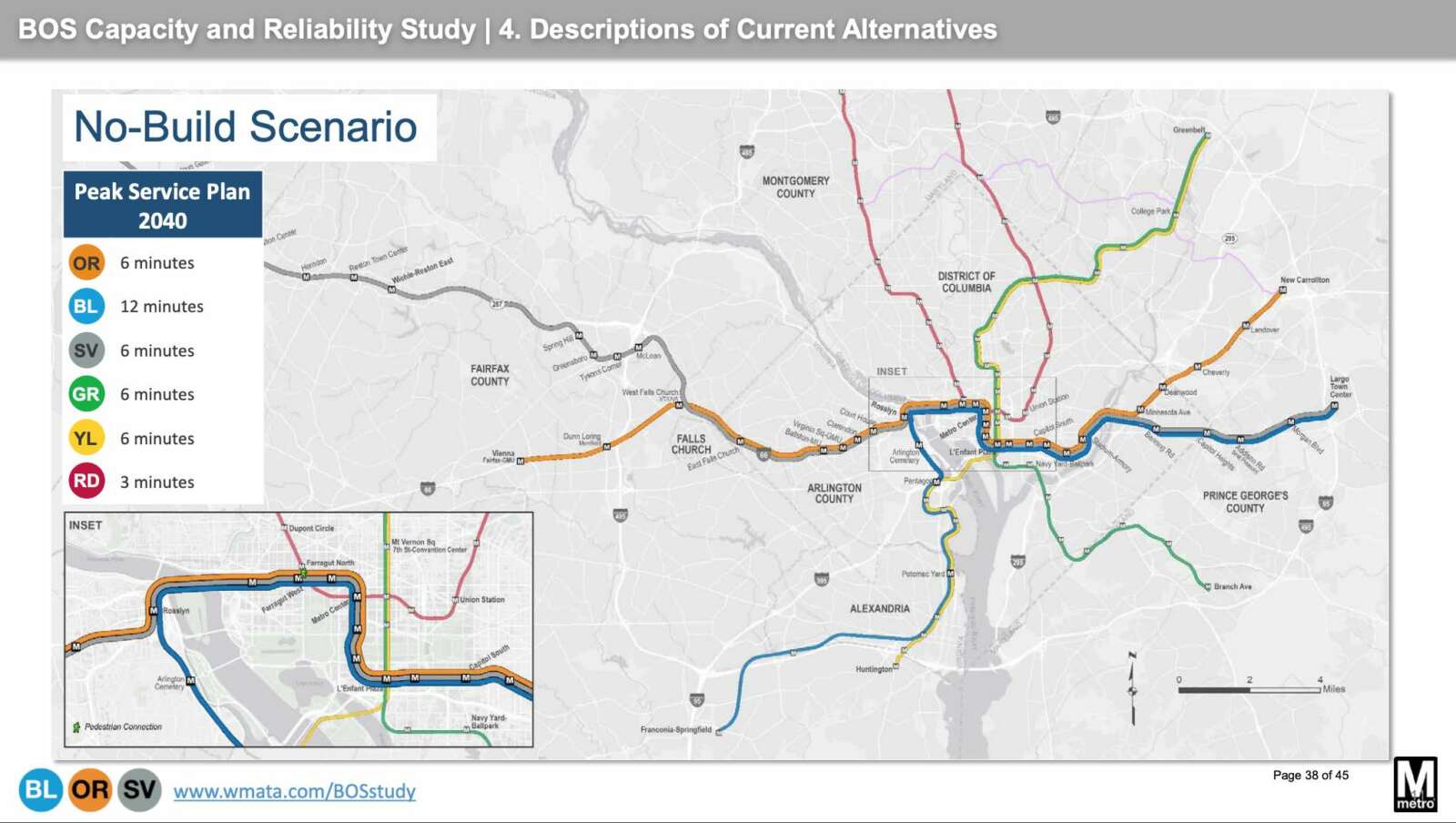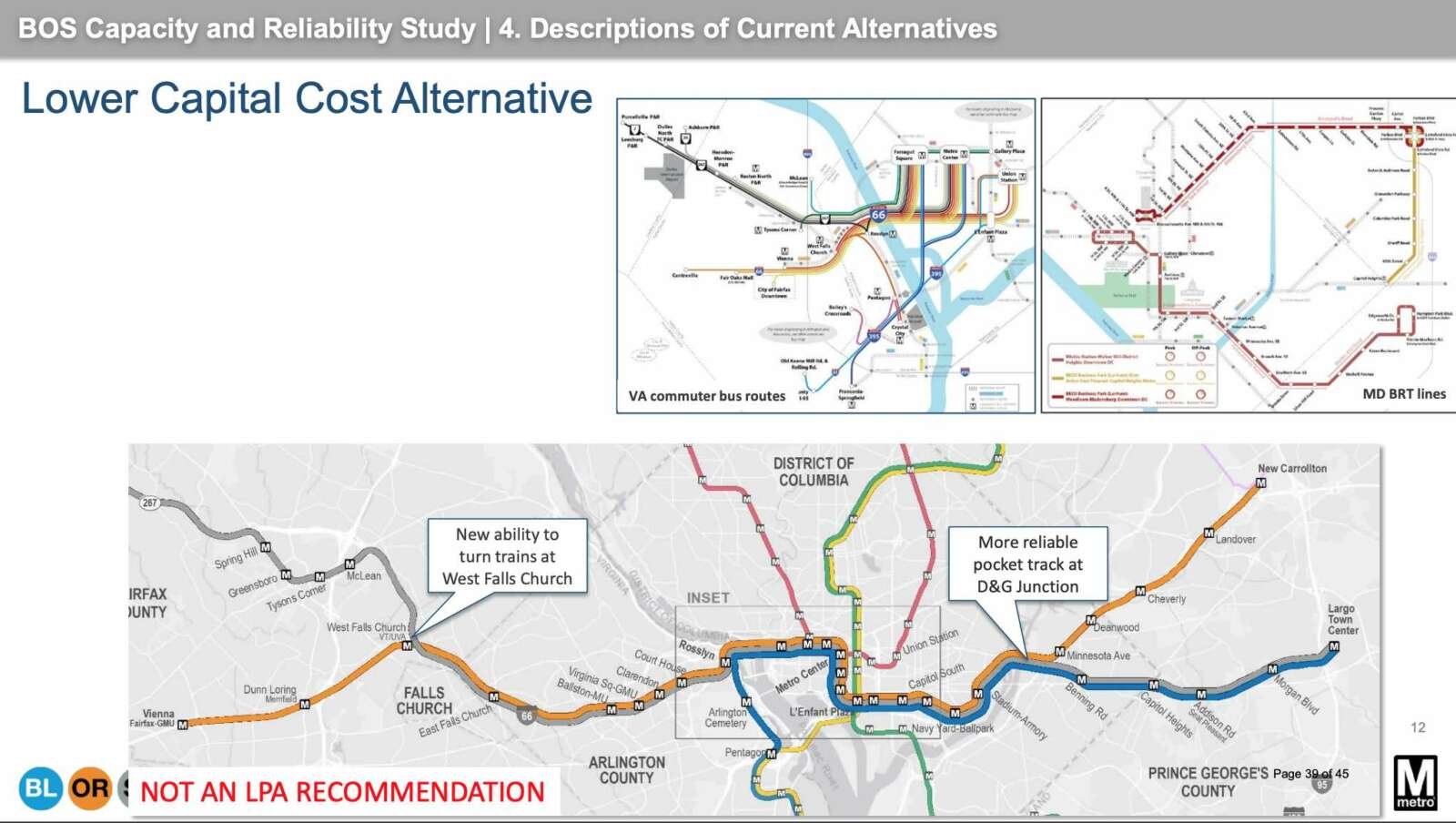It looks like the Washington Metropolitan Area Transit Authority is not going to consider a Metro line through Columbia Pike any time soon.
For the last year and a half, there were some signs that such an expansion — which was part of initial Metro planning in the 1960s but was never built — was an actual possibility.
In December 2019, Metro mulled the idea for a Silver Line extension down Columbia Pike and up Route 7, connecting with the West Falls Church Station, as one of a handful of ways to address congestion in the Rosslyn Metro tunnel, system reliability and future ridership growth. News of President Biden’s $2 trillion infrastructure plan, which coincided with WMATA’s deliberations, further crystallized those hopes.
A new study posted this week, however, indicates this extension — which nearly 70% of ARLnow readers supported in an April poll — has been ruled out. That follows a cost-benefit analysis by planners, which favored four other routes — each starting with a second Metro station in Rosslyn and adding an underground Metro station in Georgetown — as well as two options that don’t involve new construction.
Pretty much all of these (admittedly far-off) scenarios call for Metro to finally pass through Georgetown…and you may recall that the city could soon buy a very prominent Key Bridge site for a station there: https://t.co/E1DaxMAn1e https://t.co/Lp0OhMsHGX
— Alex Koma (@AlexKomaWBJ) September 7, 2021
WMATA is looking for the next way to expand Metro on a scale similar to the Silver Line extension to Dulles International Airport, as it seeks to alleviate traffic and congestion in the Rosslyn tunnel and along the the Blue, Orange and Silver lines. In early 2019, it launched the Blue/Orange/Silver Capacity & Reliability Study (BOS Study) to identify a line that would do so.
Metro planners outlined the four finalists, absent the Pike, in an update to the BOS Study that Metro posted this week. The four options use a second Rosslyn station to alleviate congestion at the existing station, and establish a long-discussed underground station in Georgetown, which has never had a Metro connection.
The possible projects, which would cost billions of dollars to build, include a Blue Line loop to National Harbor — which planners think would add the most new riders and revenue to the Metro system — as well as a Blue Line extension to Greenbelt, a Silver Line express tunnel option through Arlington, and a Silver Line to New Carrollton.
The express option “would create a separate tunnel and tracks for the Silver Line, starting at West Falls Church Station,” according to WMATA. A diagram suggests it would skip all Arlington stations except the second Rosslyn station and perhaps a second Ballston station.
“From WFC to a new second Rosslyn station, the new tunnel could support express service, local service or a mix of express and local service,” WMATA said. “From the second Rosslyn station, the Silver Line would travel through Georgetown…. to Greenbelt.”
Any of the four routes, however, could take upwards of 25 years to plan, fund and build, and may need generous federal transit funding.
Columbia Pike, a densely populated and quickly growing segment of Arlington with high bus ridership rates, has been a perennial candidate for rail or some improved transit system. About seven years ago, officials considered and later canceled a streetcar project in favor of a current effort to ameliorate the bus lines.
That the Pike is no longer a frontrunner has disappointed local Dels. Alfonso Lopez and Patrick Hope as well as County Board member Takis Karantonis.
“I am incredibly disappointed that the plans did not take into account the advocacy of numerous groups calling for an extension down Columbia Pike,” Lopez tells ARLnow. “The density is there for Metro and Columbia Pike is in need of significantly more transit options.”
He pledged to continue advocating for Metro in the region.
Karantonis says he is disappointed not just for Columbia Pike, but the whole southwestern area — including Bailey’s Crossroads and Alexandria — which will miss out on improved connectivity.
“This is not just about Columbia Pike. This is about the system in its 20-year-forward projection [and] whether the system expands in a way that serves Arlington as a whole,” said Karantonis, who formerly led the Columbia Pike Revitalization Organization, which promotes economic activity on the Pike and was a major supporter of the cancelled streetcar project.
“My problem, my disappointment with this, is there is an entire southwestern quadrant of the metropolitan region that is not going to be served prospectively by heavy rail systems,” he continued.
With WMATA thinking 25 years out and looking to bag significant federal funding, Karantonis said regional partners need to come together to hammer out a vision for the region that includes Columbia Pike. Such planning will have to account for the role transit can play in responding to the emerging climate emergency evinced by the string of recent natural disasters, he added.
In a tweet, Hope called for bigger, bolder visioning from WMATA.
I’m still waiting for the long-term vision to put Metro on Columbia Pike. The density and the economics for Arlington and Fairfax in Seven Corners and Falls Church are compelling. Let’s go big and be bold @wmata! @jobethkroeker
— Patrick Hope (@HopeforVirginia) September 8, 2021
The next steps for choosing a preferred option include briefing elected officials and boards this fall, followed by a third round of engagement also currently scheduled for this fall.
The Metro Board, which will discuss the results during its meeting tomorrow (Thursday), is set to make its final selection in 2022. Members final choice will culminate three years of planning and reviewing more than 275 ideas.
Looks like a half-glazed donut with syrup stripes and sprinkles.
— Mark Keam (@MarkKeam) September 7, 2021
With Metro on the Pike seeming like a pipe dream, some transit advocates doubled down on needed improvements to the existing bus system.
They argue lots of work is needed to continue making improvements to the Pike’s heavily-used bus lines.
We can start much sooner by reallocating road space in favor of bus-only lanes, and upgrade to light rail when the ridership warrants?
— Stephen Repetski (@srepetsk) September 8, 2021
Karantonis agrees. He said the county has a few priorities: finish undergrounding utilities, accelerate installation of improved bus stations, and improve circulation with all-door boarding and dedicated bus lanes.
“If we don’t improve it today, we’re not going to have a chance for development that will justify the higher-class transportation in the future,” he said. “When we fail to invest, this has a cooling effect on our economic development — therefore we will be less likely to qualify for the next metropolitan cycle of public investment.”


